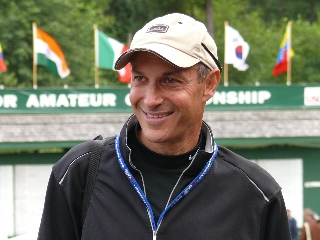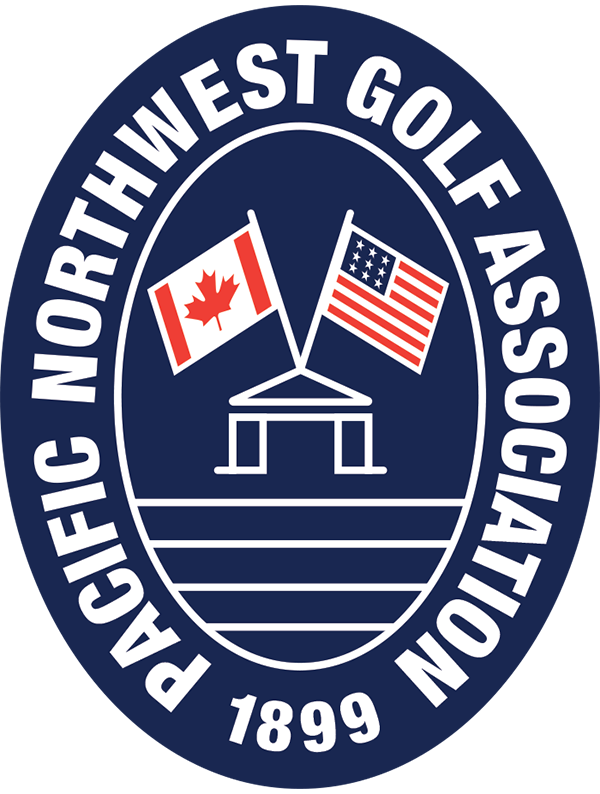Building Smarter, Not Harder

Above photo caption: John Harbottle was on hand at last month’s U.S. Junior Amateur, the second national championship to be held in the last five years at one of his designs, Gold Mountain’s Olympic course. Photo by Blaine Newnham
Course design is pulling back from building impossibly difficult courses, and creating layouts that are suitable for all levels
by Blaine Newnham
So what exactly does that mean? And how did he do it?
The trick in golf course architecture – and it’s nothing new, A.V. Macan espoused the notion nearly 100 years ago – is to make a course at the same time enjoyable for average players and a true test for good players.
Harbottle clearly did it at Gold Mountain, recent site of the U.S. Junior Amateur Championship. One day the pros play it, the next the cons, like me.
For my money, Chambers Bay might do it best. It is wide open, has few forced carries, has a slope from the back tees of only 135 – and yet knocked the world’s best amateur players to their knees in last summer’s qualifying rounds for the U.S. Am when the average score of the field one day was 80.
So what’s going on in golf architecture?
Harbottle is a member of what might be called the Northwest’s “First Family of Golf” – his mother has two USGA national championships to her name and his father an overwhelming club champion at Tacoma Country and Golf Club; both are members of the PNGA Hall of Fame.
He seems to understand the game from all angles, his portfolio as wide ranging as a redo of the acclaimed North Course at Los Angeles Country Club to removing nearly 60 bunkers and at least that many trees at White Horse.
Harbottle senses a change in golf architecture, away from architects asked by developers to design a notorious course to attract publicity and sell lots, to a return to its Golden Era.
“No doubt you see more bunkers, more water, more contour, more trees, on today’s courses,” said Harbottle, “And there is no doubt that all the elements provide interest and character for the game. But mere difficulty is not what the great architects strive to provide with their designs. Golden Era architects like Macan, MacKenzie, Thomas and Ross wished to make the course challenging for proficient players, but enjoyable for the average golfer.
“Variety is more important than mere length, and interest more important than difficulty. I think we are clearly seeing a trend back toward Golden Era values in today’s new designs and renovations. They are simply more playable, maintainable and sustainable.”
At White Horse, Harbottle made changes that would help the average player without weakening the hole for the good player. A good example is No. 2, where he removed bunkers on the left side of the fairway and the left front of the green to allow both a path to the hole for average players, as well as a bailout.
“With the removal of left fairway bunkers, the proficient player can draw the ball off the tee to find the fairway and does not think much about the left green bunkers or the fact that the approach is narrow,” said Harbottle. “They carry the ball onto the green and use spin to stop it. We have speeded up play, increased playability, decreased maintenance costs and not made the hole much different for the better players.”
“Playability has to do with creating alternate ways to play a hole,” said Harbottle. “Take the 18th at Gold Mountain Olympic for instance. It is a short par-4 with water down right side. Longer players may try to drive the green, which is one of the more challenging shots on the course. They can also play short left of the green to an area where the green is in view and angled to receive more of a running approach. There is also an option to lay-up well short and have a full short-iron into the green, but the approach shot will be blind, as it must come in over a tall mound.”
From a different set of tees, average players have similar options.
Harbottle is clearly buying into the USGA’s push for people to move forward in their selection of a set of tees. He understands what technology has brought to the game, but also how course maintenance has changed.
“Years ago,” he said, “courses had no fairway irrigation. They were generally shorter by today’s standards and played fast and firm. As equipment advanced, courses became longer and longer. And while the back tees are getting longer and probably always will, the trend toward shorter and multiple tee yards is coming on strong.”
Harbottle understands we need a cultural as well as physical change.
“The most ironic thing I have noticed lately is that rather than seeing many of the less proficient players moving forward to a shorter yardage, it is the older low-handicap players that are moving up,” he said. “These better players can shoot the same scores they did years ago when they play the right tees, and they are not too shy to do it.”
Blaine Newnham is a former editor and columnist for the Eugene Register-Guard and former sports columnist and assistant managing editor for the Seattle Times. He covered the 1966 U.S. Open, following Ben Hogan around the Olympic Club. He covered the four majors of the “Tiger Slam”, when Woods won his four consecutive championships.





